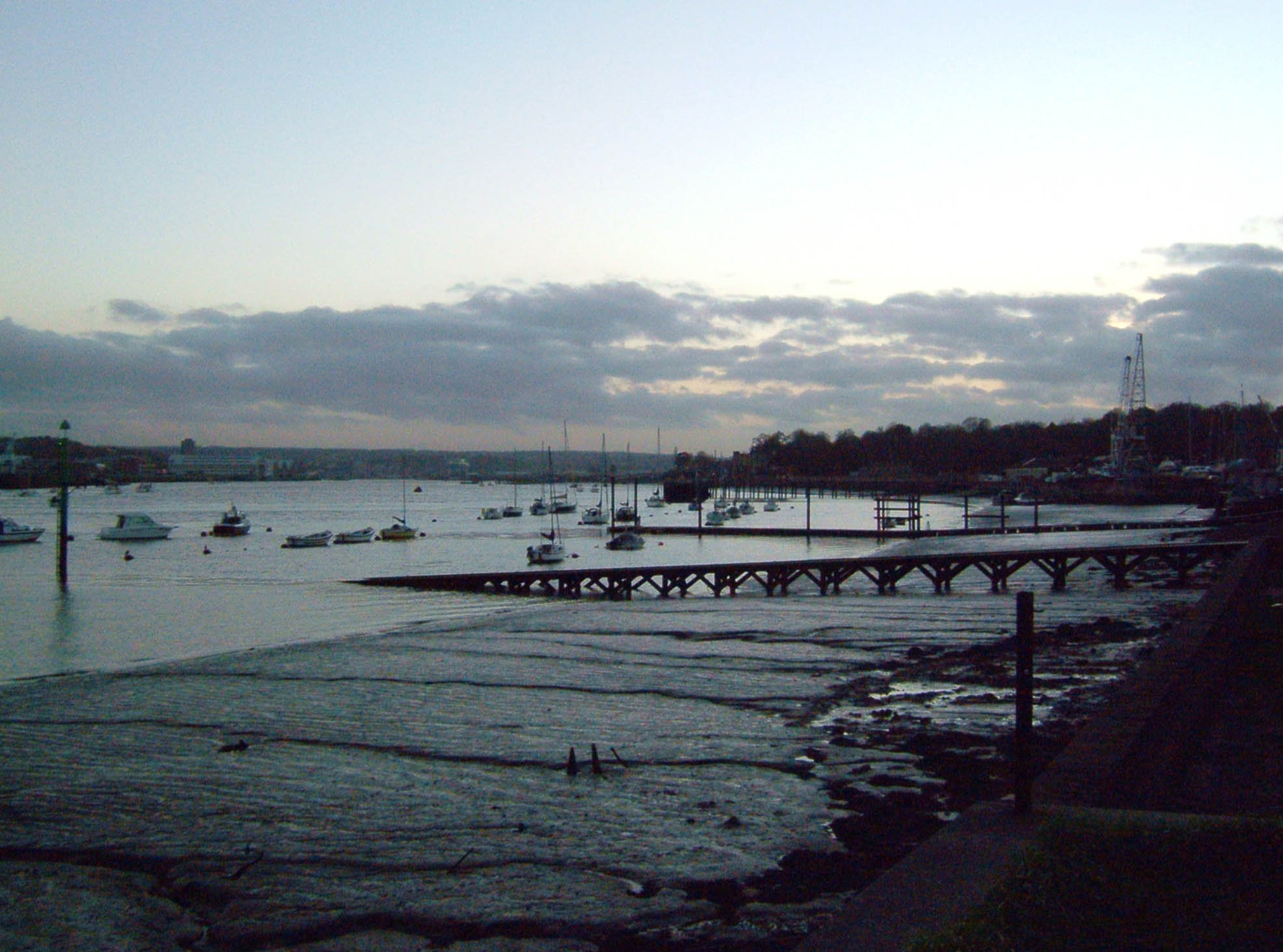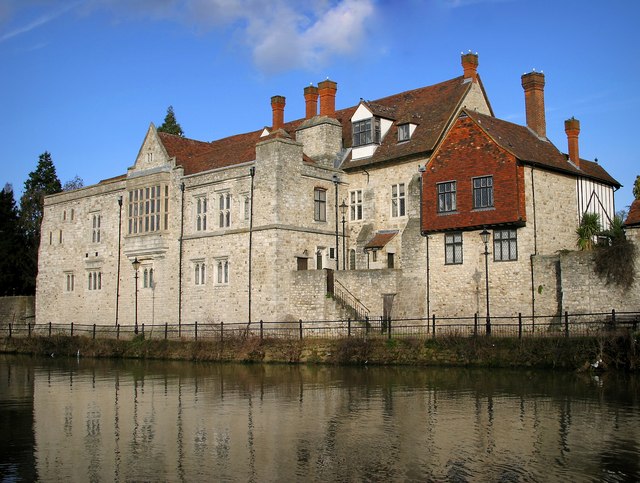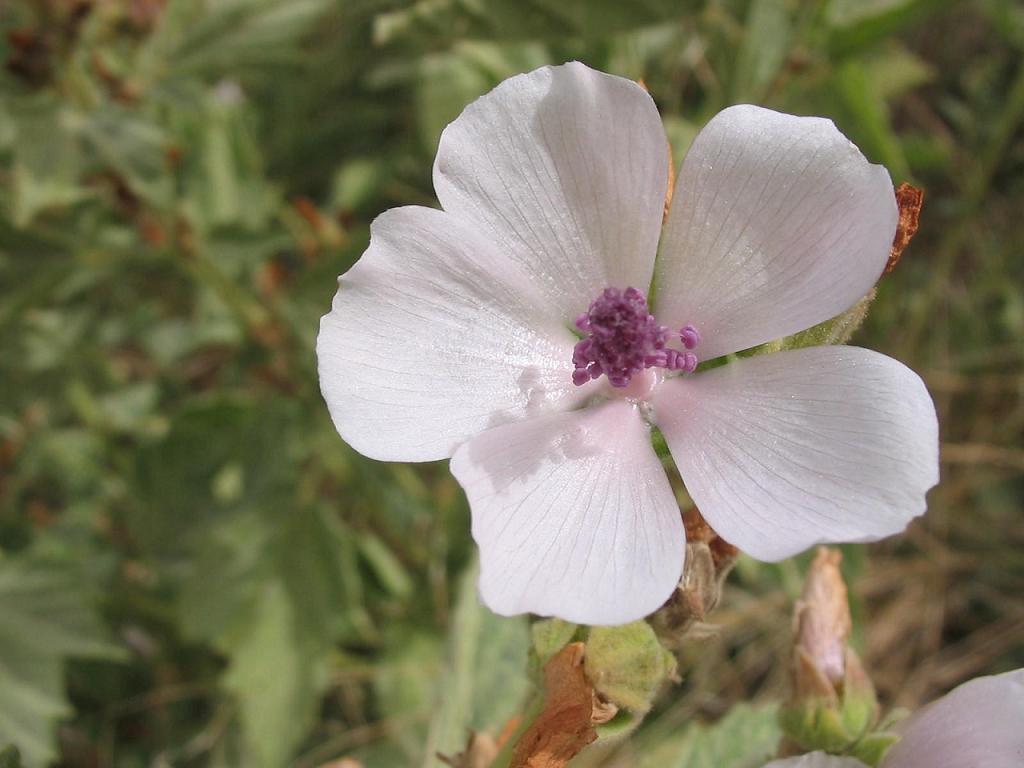|
Burham Marsh
Burham Marsh nature reserve is an 11 hectare tidal Reed bed on the River Medway 5 miles northwest of Maidstone. It is just east of Snodland but being on the east bank of the river it is accessed via Burham. It is part the Holborough to Wouldham Marshes Site of Special Scientific Interest. Access Cars may be parked at Burham Court Church at TQ 717621. A public footpath runs along the river embankment (the sea wall) from which there are good views of most of the reserve and adjacent meadows. The path is mostly level but soft in wet weather. Fauna and flora Breeding species include reed and sedge warbler and water rail. Wintering species include bearded reedling, snipe, redshank and bittern. During the migration periods significant numbers of swallow and sand martin are seen. The River Medway at this point attracts a variety of birds including kingfisher, cormorant and various species of duck including teal, shelduck and wigeon. The low lying grassland areas provide grazing and r ... [...More Info...] [...Related Items...] OR: [Wikipedia] [Google] [Baidu] |
Reed Bed
A reedbed or reed bed is a natural habitat found in floodplains, waterlogged depressions and estuaries. Reedbeds are part of a succession from young reeds colonising open water or wet ground through a gradation of increasingly dry ground. As reedbeds age, they build up a considerable litter layer that eventually rises above the water level and that ultimately provides opportunities in the form of new areas for larger terrestrial plants such as shrubs and trees to colonise. Artificial reedbeds are used to remove pollutants from greywater, and are also called constructed wetlands. Types Reedbeds vary in the species that they can support, depending upon water levels within the wetland system, climate, seasonal variations, and the nutrient status and salinity of the water. ''Reed swamps'' have 20 cm or more of surface water during the summer and often have high invertebrate and bird species use. ''Reed fens'' have water levels at or below the surface during the summer an ... [...More Info...] [...Related Items...] OR: [Wikipedia] [Google] [Baidu] |
River Medway
The River Medway is a river in South East England. It rises in the High Weald, East Sussex and flows through Tonbridge, Maidstone and the Medway conurbation in Kent, before emptying into the Thames Estuary near Sheerness, a total distance of . About of the river lies in East Sussex, with the remainder being in Kent. It has a catchment area of , the second largest in southern England after the Thames. The map opposite shows only the major tributaries: a more detailed map shows the extensive network of smaller streams feeding into the main river. Those tributaries rise from points along the North Downs, the Weald and Ashdown Forest. Tributaries The major tributaries are: * River Eden * River Bourne, known in the past as the Shode or Busty * River Teise, major sub-tributary River Bewl * River Beult * Loose Stream * River Len Minor tributaries include: * Wateringbury Stream * East Malling Stream * River Grom Former minor tributaries include the Old Bourne ... [...More Info...] [...Related Items...] OR: [Wikipedia] [Google] [Baidu] |
Maidstone
Maidstone is the largest Town status in the United Kingdom, town in Kent, England, of which it is the county town. Maidstone is historically important and lies 32 miles (51 km) east-south-east of London. The River Medway runs through the centre of the town, linking it with Rochester, Kent, Rochester and the Thames Estuary. Historically, the river carried much of the town's trade as the centre of the agricultural county of Kent, known as the Garden of England. There is evidence of settlement in the area dating back before the Stone Age. The town, part of the borough of Maidstone, had an approximate population of 100,000 in 2019. Since World War II, the town's economy has shifted from heavy industry towards light industry and services. Toponymy Anglo-Saxon period of English history, Saxon charters dating back to ca. 975 show the first recorded instances of the town's name, ''de maeides stana'' and ''maegdan stane'', possibly meaning ''stone of the maidens'' or ''stone of the ... [...More Info...] [...Related Items...] OR: [Wikipedia] [Google] [Baidu] |
Snodland
Snodland is a town in the borough of Tonbridge and Malling in Kent, England. It lies on the River Medway, between Rochester and Maidstone, and from central London. At the 2011 Census, it had a population of 10,211. History "Snoddingland" is first mentioned in a charter of 838 in which King Egbert of Wessex gave "four ploughlands in the place called Snoddingland and Holanbeorge" (Holborough) to Beornmod, the Bishop of Rochester. Since -ingland names are mostly derived from personal names, the name appears to refer to 'cultivated land connected with Snodd' or Snodda. The Domesday Book refers to it as "Esnoiland". The first Roman advance in the conquest of Britain may have crossed the River Medway near Snodland, although there are other possible locations. The supposed crossing place is marked by a memorial on the opposite side of the river from Snodland, close to Burham. Near this spot, a ferry later carried pilgrims bound for Canterbury along the Pilgrims' Way. Bishop Gu ... [...More Info...] [...Related Items...] OR: [Wikipedia] [Google] [Baidu] |
Burham
Burham is a village and civil parish in the borough of Tonbridge and Malling in Kent, England. According to the 2001 census it had a population of 1,251, decreasing to 1,195 at the 2011 Census. The village is near the Medway towns. The history of Burham can be traced to Roman times. AD43 saw the Battle of the Medway at the crossing point on the River Medway, where Burham is now, when the invading Roman legions, advancing west across Kent, were confronted by a massed army of the ancient British tribes. The Roman victory altered the course of history in Britain, and the remains of Roman buildings have been found in Burham and the neighbouring village of Eccles, Kent, Eccles. There has been a Settlement in Burham since Saxon times, "ham" being the Saxon word for "settlement" — the "Bur" part of the name comes from "burgh", or borough, referring to the borough of Rochester. The name "Burham" means "the village near the borough". In the 11th century Burham belonged to Leofwin ... [...More Info...] [...Related Items...] OR: [Wikipedia] [Google] [Baidu] |
Maidstone (borough)
The Borough of Maidstone is a local government district with borough status in Kent, England. Its administrative centre is Maidstone, the county town of Kent. The borough was formed on 1 April 1974 by the merger of the Municipal Borough of Maidstone with the rural districts of Maidstone and Hollingbourne, under the Local Government Act 1972. Position The borough covers an area generally to the east and south of the town of Maidstone: as far north as the M2 motorway; east down the M20 to Lenham; south to a line including Staplehurst and Headcorn; and west towards Tonbridge. Generally speaking, it lies between the North Downs and the Weald, and covers the central part of the county. The M20 motorway crosses it from west to east, as does High Speed 1. Geologically, the Greensand ridge lies to the south of the town. The very fine sand provides a good source for glass-making. The clay vale beyond, through which flow the three rivers which meet at Yalding; the Medway, the ... [...More Info...] [...Related Items...] OR: [Wikipedia] [Google] [Baidu] |
Site Of Special Scientific Interest
A Site of Special Scientific Interest (SSSI) in Great Britain or an Area of Special Scientific Interest (ASSI) in the Isle of Man and Northern Ireland is a conservation designation denoting a protected area in the United Kingdom and Isle of Man. SSSI/ASSIs are the basic building block of site-based nature conservation legislation and most other legal nature/geological conservation designations in the United Kingdom are based upon them, including national nature reserves, Ramsar sites, Special Protection Areas, and Special Areas of Conservation. The acronym "SSSI" is often pronounced "triple-S I". Selection and conservation Sites notified for their biological interest are known as Biological SSSIs (or ASSIs), and those notified for geological or physiographic interest are Geological SSSIs (or ASSIs). Sites may be divided into management units, with some areas including units that are noted for both biological and geological interest. Biological Biological SSSI/A ... [...More Info...] [...Related Items...] OR: [Wikipedia] [Google] [Baidu] |
Sea Wall
A seawall (or sea wall) is a form of coastal defense constructed where the sea, and associated coastal processes, impact directly upon the landforms of the coast. The purpose of a seawall is to protect areas of human habitation, conservation and leisure activities from the action of tides, waves, or tsunamis. As seawall is a static feature it will conflict with the dynamic nature of the coast and impede the exchange of sediment between land and sea. Seawall designs factor in local climate, coastal position, wave regime (determined by wave characteristics and effectors), and value (morphological characteristics) of landform. Seawalls are hard engineering shore-based structures which protect the coast from erosion. Various environmental issues may arise from the construction of a seawall, including the disruption of sediment movement and transport patterns. Combined with a high construction cost, this has led to an increasing use of other soft engineering coastal management ... [...More Info...] [...Related Items...] OR: [Wikipedia] [Google] [Baidu] |
The Southern And South East England Tourist Board
''The'' () is a grammatical article in English, denoting persons or things that are already or about to be mentioned, under discussion, implied or otherwise presumed familiar to listeners, readers, or speakers. It is the definite article in English. ''The'' is the most frequently used word in the English language; studies and analyses of texts have found it to account for seven percent of all printed English-language words. It is derived from gendered articles in Old English which combined in Middle English and now has a single form used with nouns of any gender. The word can be used with both singular and plural nouns, and with a noun that starts with any letter. This is different from many other languages, which have different forms of the definite article for different genders or numbers. Pronunciation In most dialects, "the" is pronounced as (with the voiced dental fricative followed by a schwa) when followed by a consonant sound, and as (homophone of the archaic p ... [...More Info...] [...Related Items...] OR: [Wikipedia] [Google] [Baidu] |
Sonchus Palustris
''Sonchus palustris'', commonly known as marsh sowthistle, is a plant native to temperate regions of the Europe, Russia, Central Asia, and Xinjiang in western China. It has also become naturalized in a few locations in the Canadian Province of Ontario. ''Sonchus palustris'' can be found in damp peaty or silty soils rich in nitrogen. The species epithet An epithet (, ), also byname, is a descriptive term (word or phrase) known for accompanying or occurring in place of a name and having entered common usage. It has various shades of meaning when applied to seemingly real or fictitious people, di ... ''palustris'' is Latin for "of the marsh" and indicates its common habitat. It is a perennial herb sometimes as much as 350 cm (almost 12 feet) tall. It produces an array of numerous flower heads, each with numerous yellow ray flowers but no disc flowers. References palustris Flora of temperate Asia Flora of Europe Plants described in 1753 Taxa named by Carl Linnaeu ... [...More Info...] [...Related Items...] OR: [Wikipedia] [Google] [Baidu] |
Althaea Officinalis
''Althaea officinalis'', the marsh mallow or marshmallow, is a species of flowering plant indigenous to Europe, Western Asia and North Africa, which is used in herbalism and as an ornamental plant. A confection made from the root since ancient Egyptian times evolved into today's marshmallow treat, but most modern marshmallow treats no longer contain any marsh-mallow root. Description This herbaceous perennial has stems which die down in the autumn, They typically grow , but can reach and put out only a few lateral branches. The leaves are shortly petioled, roundish, ovate- cordate, long, and about broad, entire or three to five lobed, irregularly toothed at the margin, and thick. They are soft and velvety on both sides, due to a dense covering of stellate hairs. The lilac-pink flowers are shaped like those of the common mallow, but are smaller and of a pale colour, and are either axillary, or in panicles, more often the latter. The stamens are united into a tube, the anth ... [...More Info...] [...Related Items...] OR: [Wikipedia] [Google] [Baidu] |
Kent Wildlife Trust
Kent Wildlife Trust (KWT) is a conservation charity in the United Kingdom that was founded in 1958, previously known as the Kent Trust for Nature Conservation. It aims to "work with people to restore, save and improve our natural spaces" and to "ensure that 30% of Kent and Medway – land and sea – is managed to create a healthy place for wildlife to flourish". In 2016 it had thirty-one thousand members and an annual income of £4 million. KWT manages over sixty-five nature reserves, of which twenty-four are Sites of Special Scientific Interest, two are national nature reserves, nine are Nature Conservation Review sites, seven are Special Areas of Conservation, three are Special Protection Areas, seven are local nature reserves, one is a Geological Conservation Review site, thirteen are in Areas of Outstanding Natural Beauty and one is a scheduled monument. Kent is a county in the southeastern corner of England. It is bounded to the north by Greater Lo ... [...More Info...] [...Related Items...] OR: [Wikipedia] [Google] [Baidu] |





.png)

